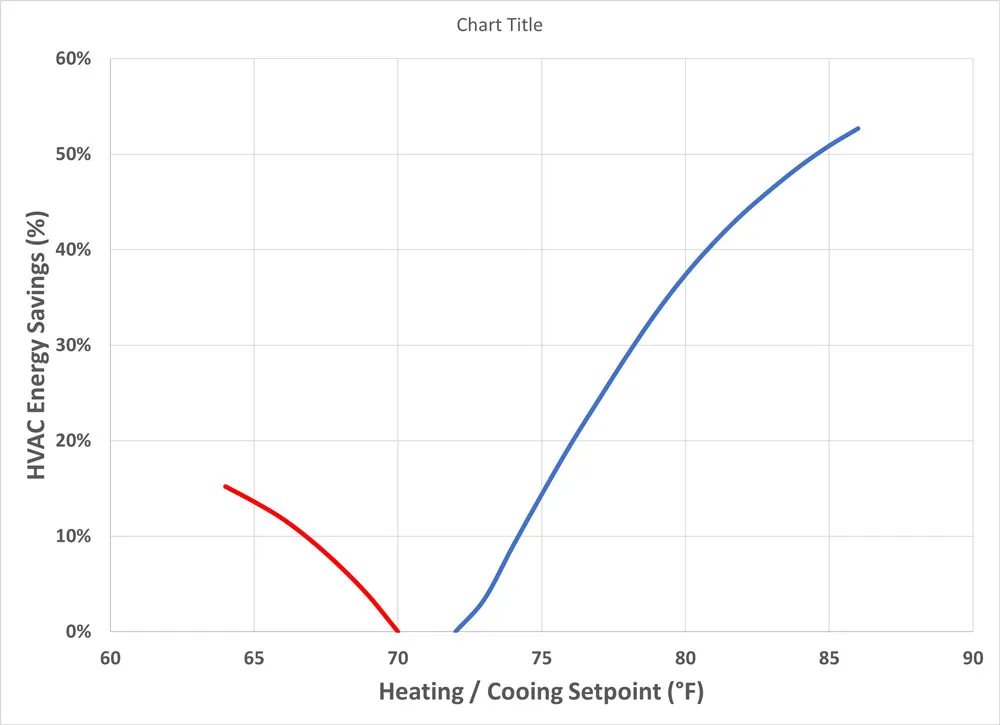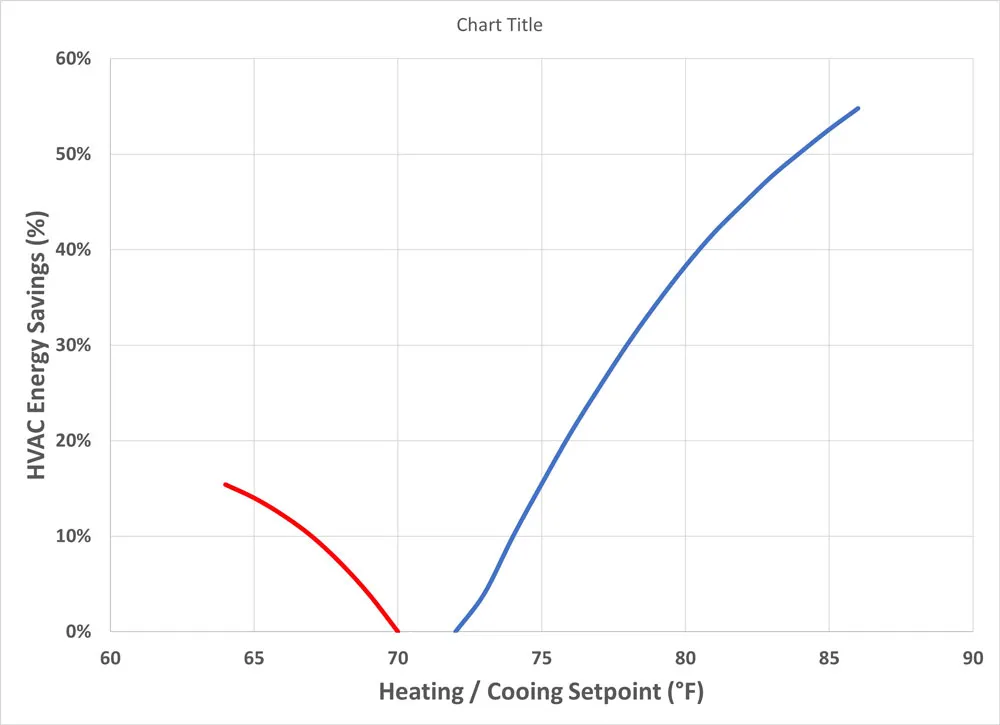Energy & Cost Impacts: Personal Comfort Systems
Personal comfort systems (PCS) can save HVAC energy by extending the range of comfortable room temperatures and allowing building heating and cooling systems to operate at higher cooling setpoints and lower heating setpoints. Heating and cooling occupants directly is inherently much more efficient than cooling the surrounding room air or surfaces.
Studies have shown that increasing the cooling setpoint or decreasing the heating setpoint by 1 degree F can save about 5% of the cooling or heating energy. Each PCS we evaluate on this site has been evaluated to assess its corrective power. The corrective power (CP) is defined as the difference between two ambient temperatures at which equal thermal sensation is achieved – one with no PCS (the reference condition), and one with PCS in use. CP represents the degree to which a PCS system may “correct” the ambient temperature toward neutrality. In practice, this is the maximum change in thermostat setpoint that the PCS can counteract. The cooling CP for some of the PCS devices we evaluated is as high as 6º F, meaning that the device could reduce cooling energy by as much as 30% (by increasing the cooling setpoint by 6º F). It is important to point out that the energy savings associated with PCS results from making changes to heating and/or cooling setpoints.
PCS can also reduce peak energy demand and increase resilience to power outages when they are powered by batteries.
The UC Berkeley Center for the Built Environment provides a free online tool that you can use to estimate the energy savings associated with a heating or cooling setpoint change.
















